Having been around for about 50 years it’s safe to say that Horvath has had their share of experience and stories to tell. After all just think about the development of Berlin in that period with the fall of the Berlin Wall as the defining moment. Walking in the door you feel that history.
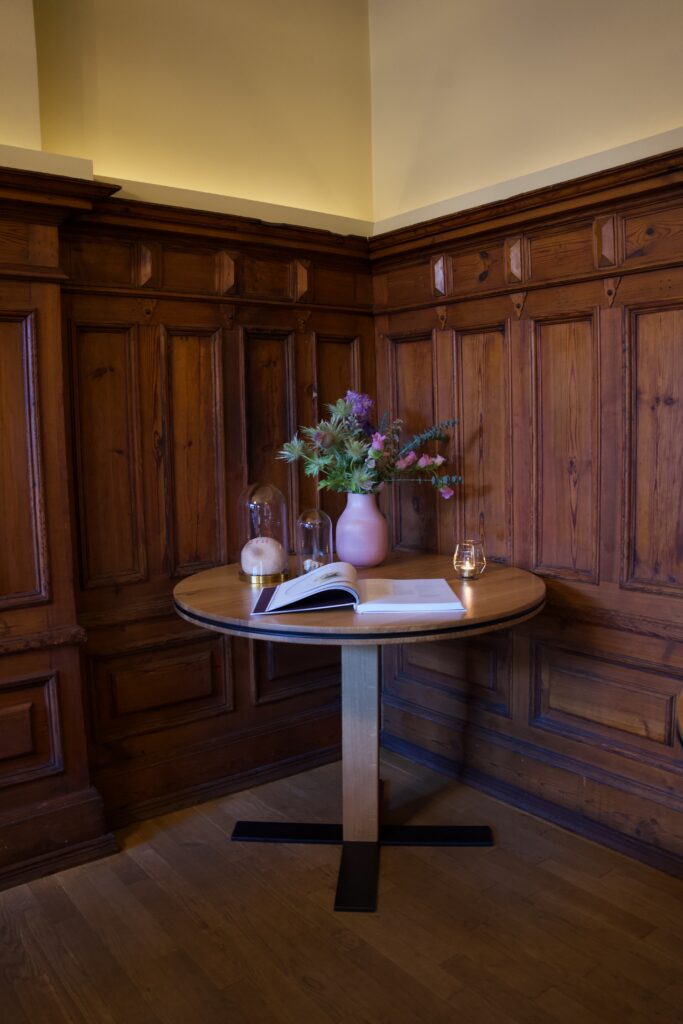
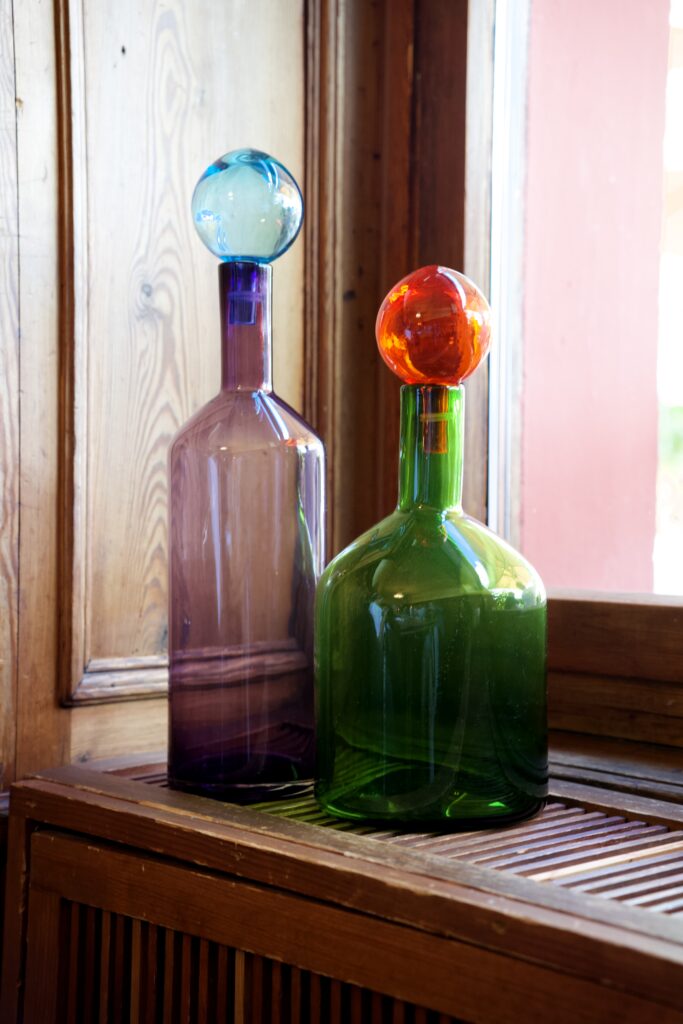
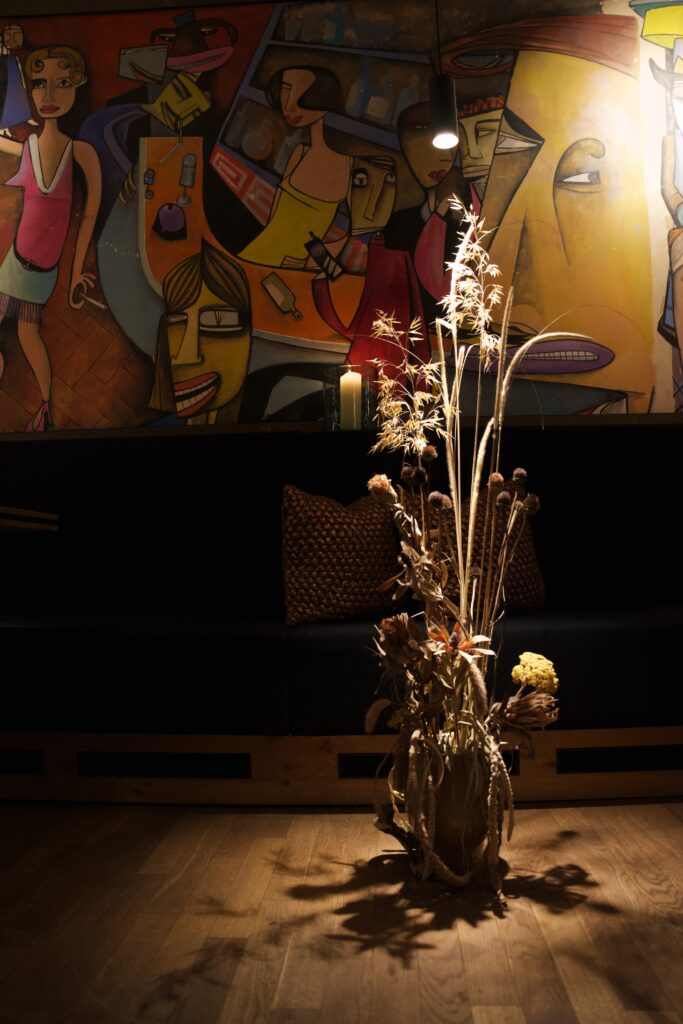
From the outside however it looks like the its neighours of casual cafes where people enjoy simple meals overlooking the canal. After the first step inside all of that changes. The wooden panels gives an oldschool cosy distint German vibe, but when you go deeper into the restaurant it changes to a modern feel. Most noticasable with the big mureal from local artist Jim Avignon who also is one of the original artist of the East Side Gallery at the Berlin Wall. A great touch that uses the history of the place to its advantage.
Horvath is a Hungarian poet from the time where it was called Osteria-Hungary. Rightfully so the head chef Sebastian Frank is born and raised in Ostria which is also where he takes his inspiration for the menu. To be even more precise he takes his inspiration from his childhood memories. His ability as a storyteller are obvious once the menu begins.
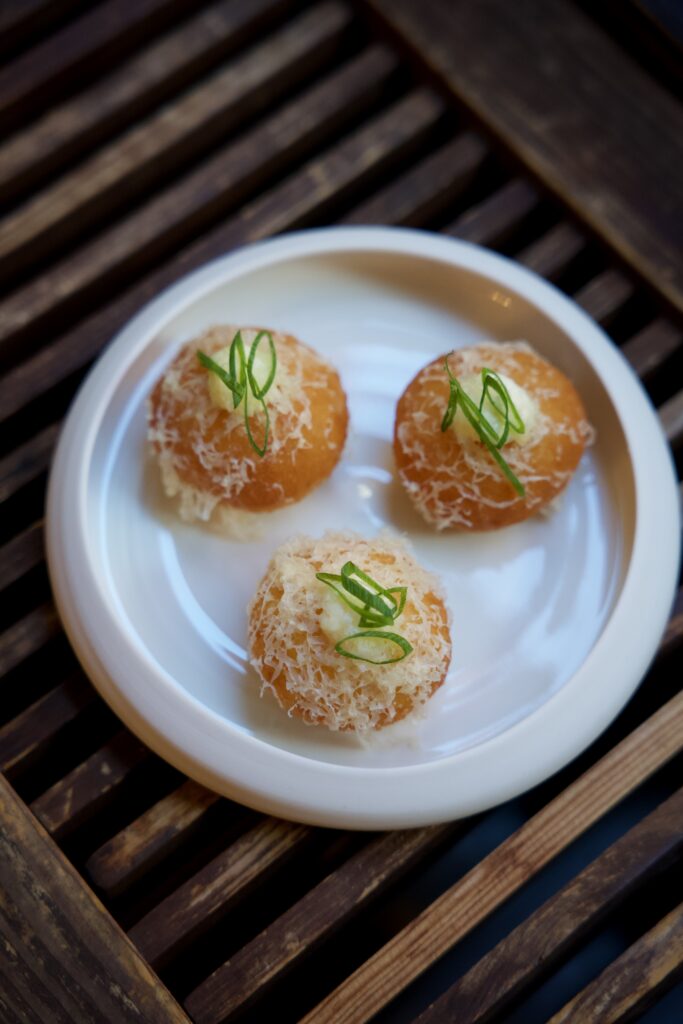
The first small snack was a delicious potato bread with sour creme. As rich and delicious as you would expect. The inspiration from this dish was found in a traditional Austrian market snack Wiener Prater. I for one wouldn’t mind eating this walking around a market on a saturday afternooon.
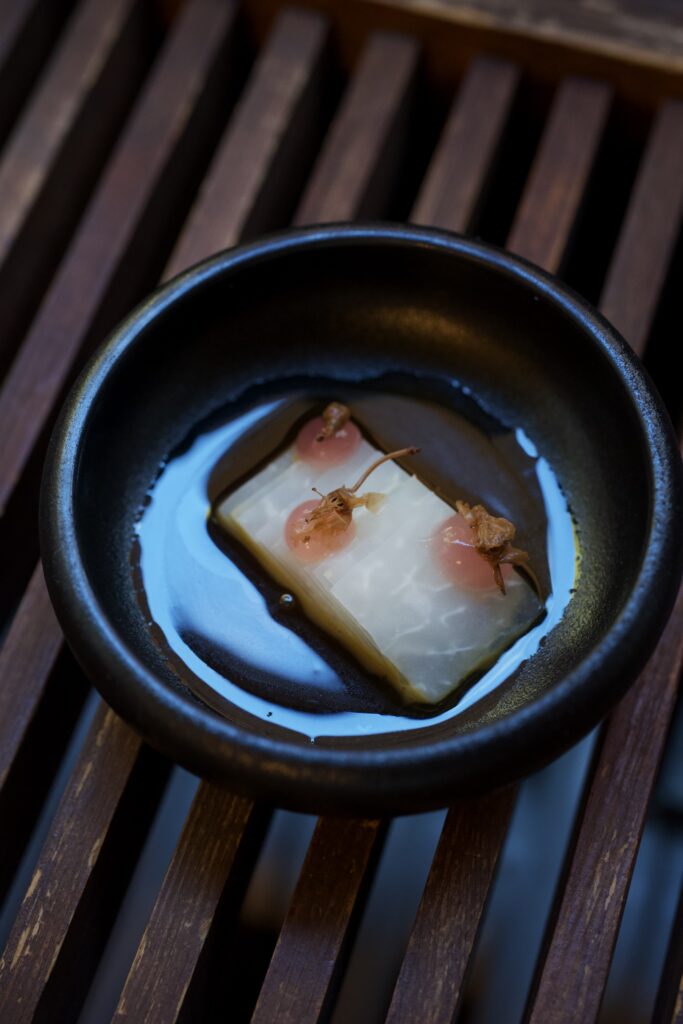
This would be followed by a cold kohlrabi soup with a smoked vinegar and ram reduction which naturally gave it an even more salty and smoky flavor. The two contrasting element of the cold kohlrabi and the soups worked really well together.
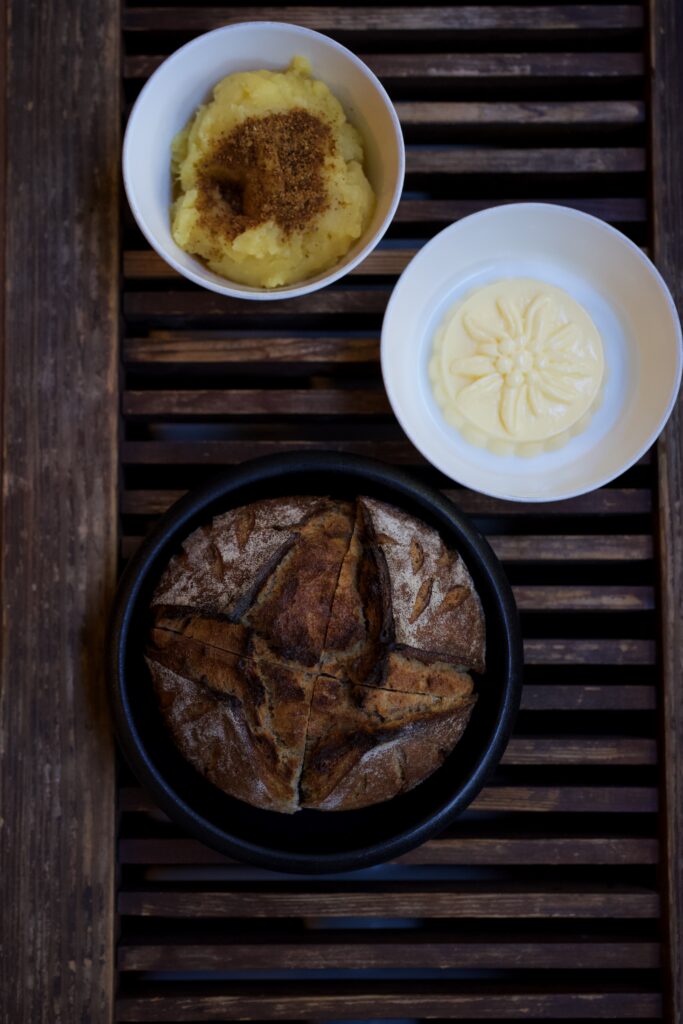
Lots of restaurants does their breadserving as a separate dish in the middle of the menu. Here it was done in the beginning but they added two very nice touches. The first one was that they butter was shaped like the Austrian flower Edelweiss and the second one was that it was served with a really rich and delicious mash potato. Because why not.
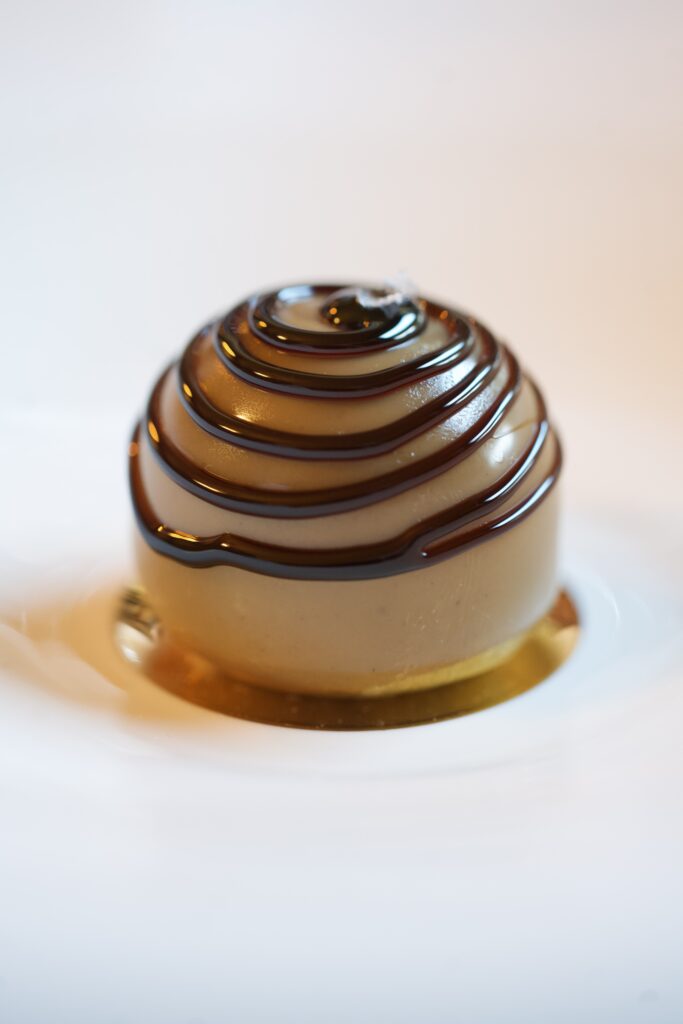
The next dish was probably my favorite. Mushroom made to mimic the flavor and texture of foie gras but naturally with a stronger umami feel without the fatty flavor. A apple balsamic reduction provided a super refreshing and acidic element. Truely delicious and beautifull.
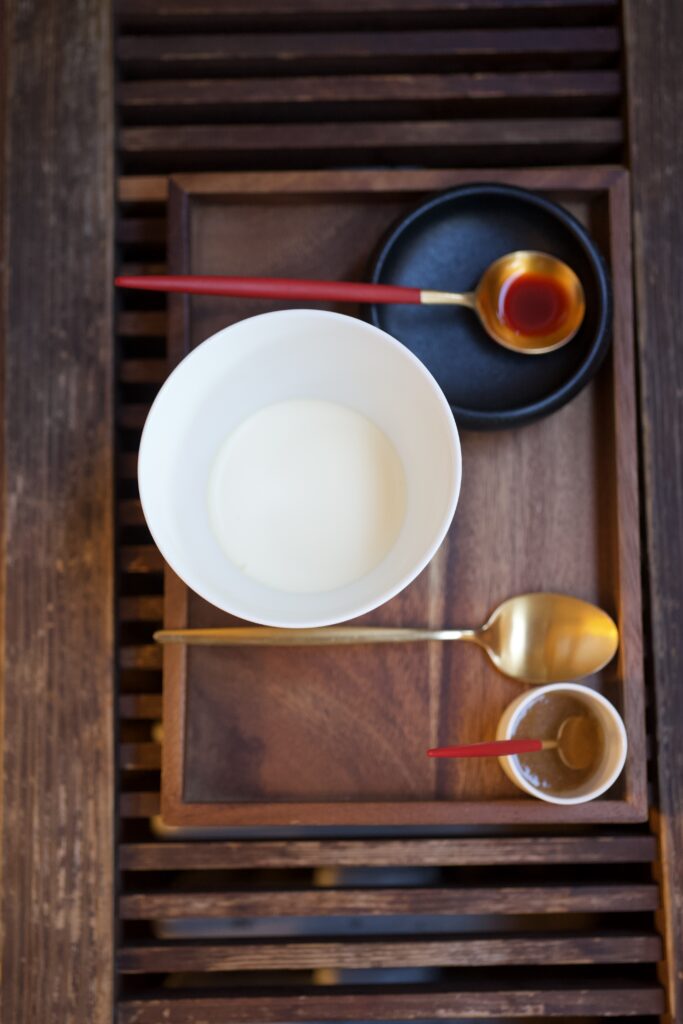
The strongest dish in terms of storytelling and simplicity was next. It was called first dip. It’s built around Sebastian’s memory of that first spoonful of sour cream when you open the can. To begin that first spoonful was not impressive. After all it was just sour cream, but that changed completely once you tasted it with the different reductions that the spoons had been dipped in. Naturally the dish changed completely when you changed your spoon for the different reductions. I loved both the story and the experience of eating the dish.
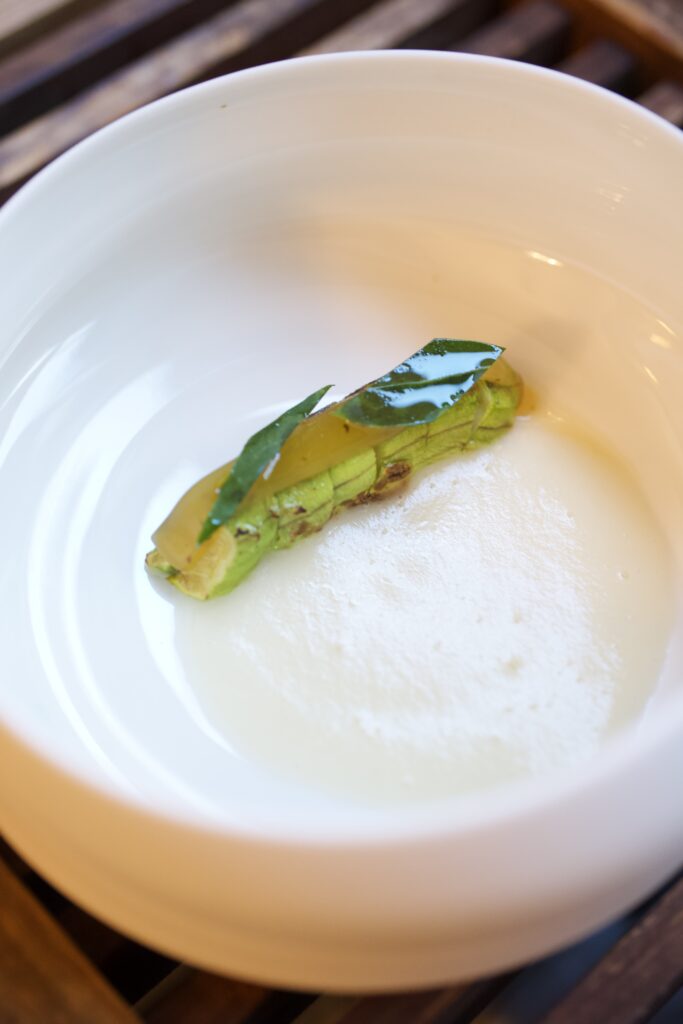
You wouldn’t believe it by looking at the dish but it’s inspired by the Austrian ragouts. On the plate was a zucchini and a simple emulsion. However there were so much more. The emulsion was made of lard onions for lots of umami to go with the dehydrated then grilled zucchini. A dish that showed how they build dishes for flavor and usually rich on umami. All of this just using vegetables through a bit of technique and yet presented simple on a plate.
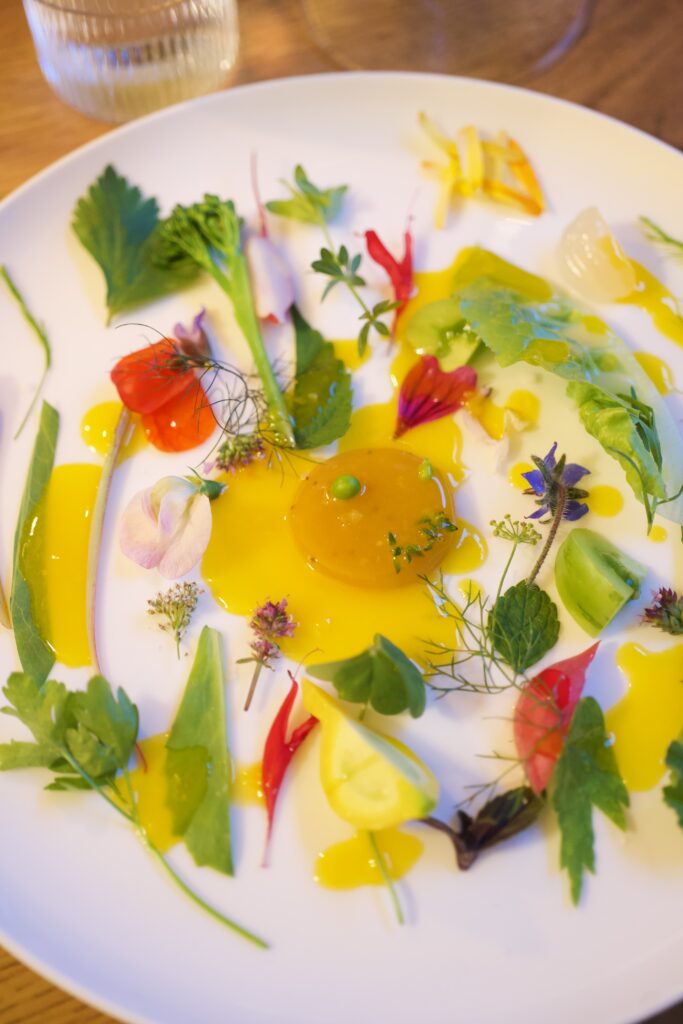
The next dish was probably the most simple on the menu but also really delicious. Sebastian had spent the morning collecting flowers and fresh herbs with his daughter. They were served raw but with a rich egg yolk sauce. A true Alain Passard moment that really worked.
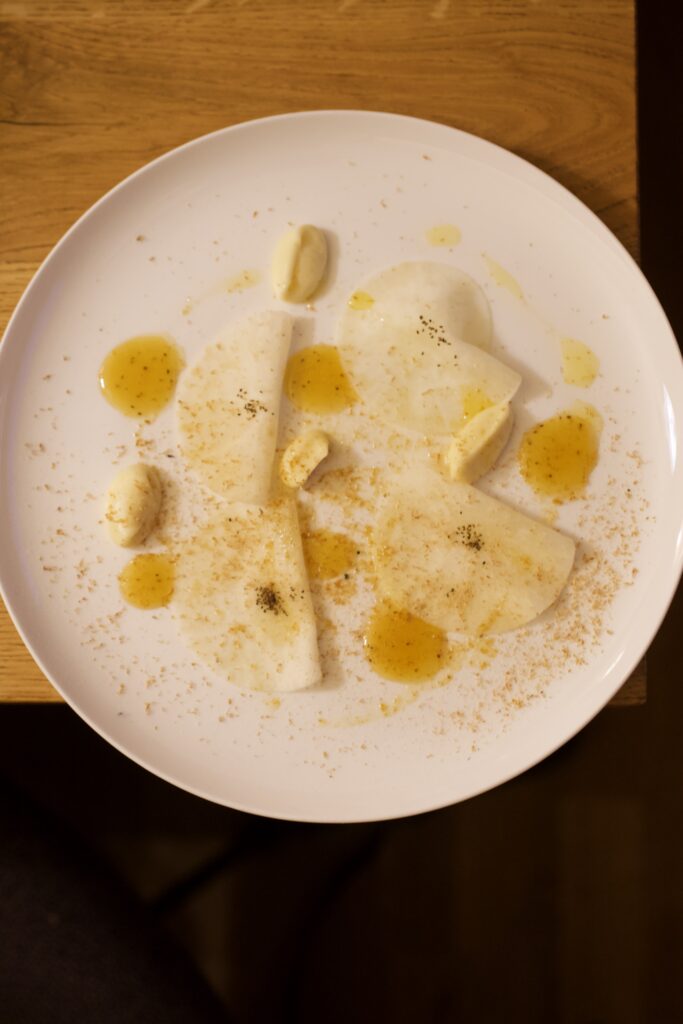
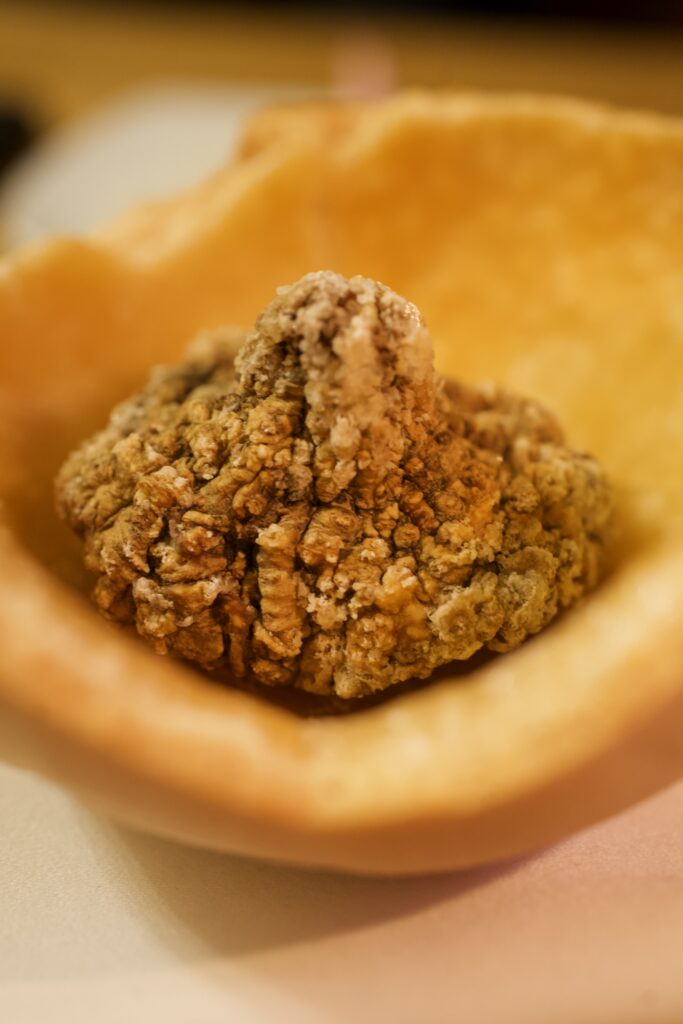
From here on it would get more investigating, simple and intense. The first was celeriac in different ages and textures. The first was a salt baked celeriac that after baking had been stored for a year to become even more intense through the drying process. A great spicy to go with the fresh steamed celeriac and a celeriac bechamel. It’s hard not to think of Massimo Botturas 5 stages of parmigiana as the inspiration for this dish which is an amazing dish to draw inspiration from.
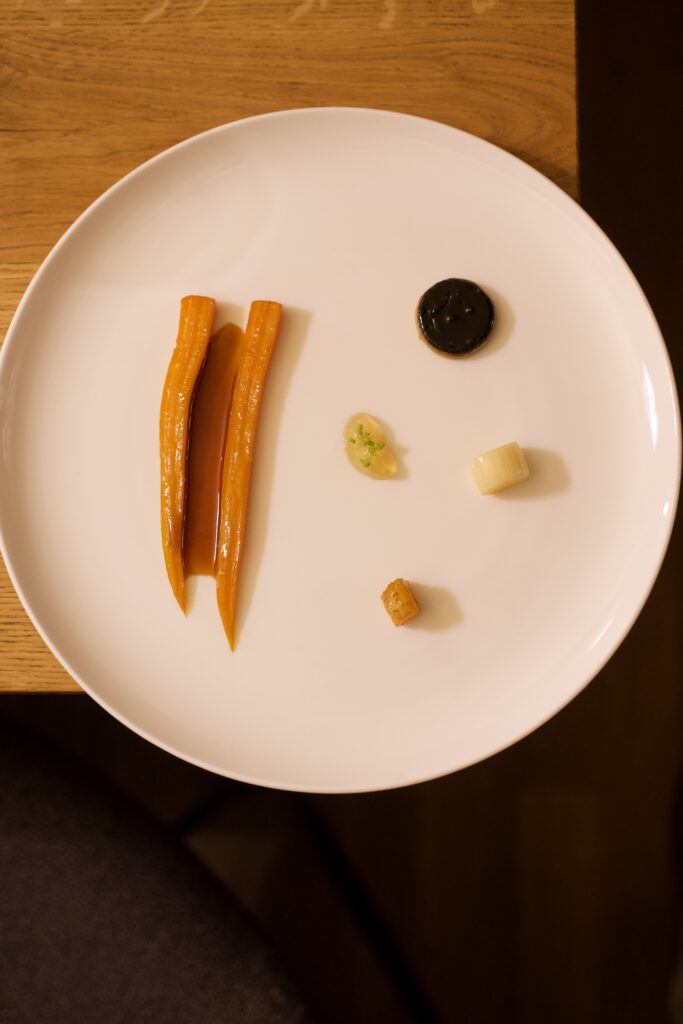
We would return to the childhood memories of Sebastian eating Sunday soup where the vegetables that had been cooked in the soup to give flavor were discarded. Here they were the main attraction and had been given more attention than the regular Sunday soup. That paid in an umami rich dish that looked so simple proving that looks can be deceiving.
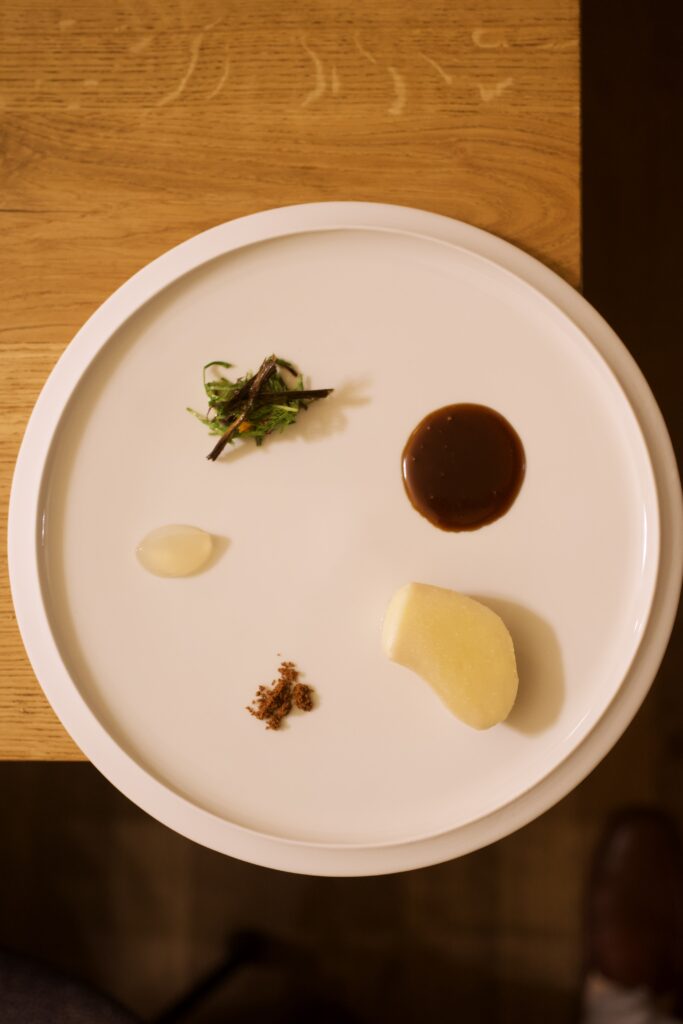
As a final savory dish we would have a steamed king oyster mushroom. The flavor was so intense that you at no point missed the piece of steak that it was suppose to substitute. The simplicity of the presentation was again on point where each element carried its own different flavor and texture.
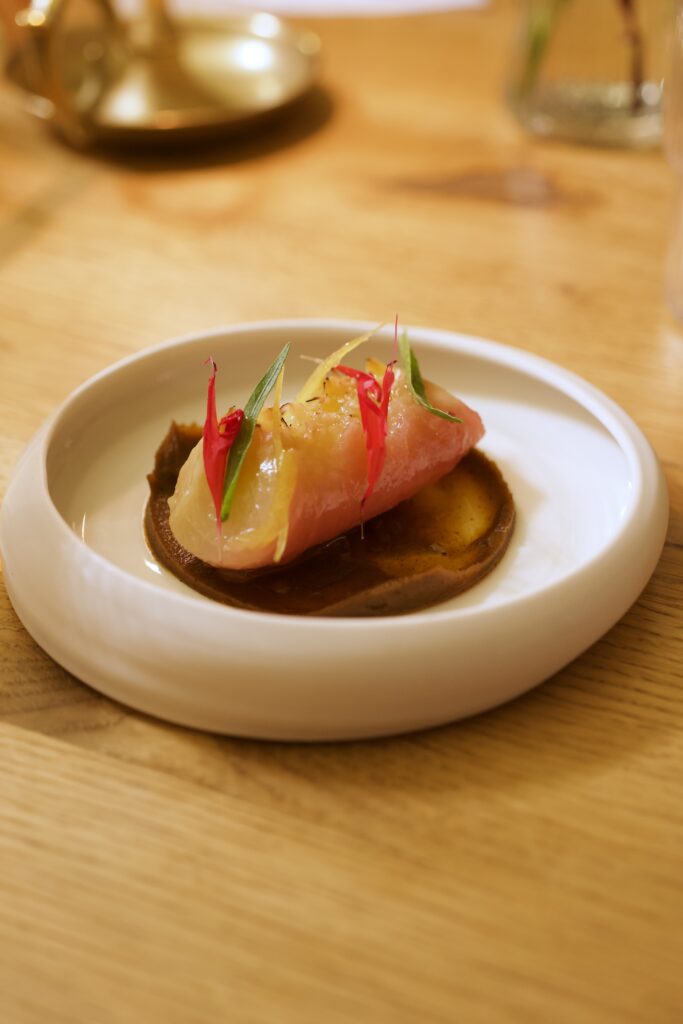
To finish we would have a sweet and savory dessert. A peach had been baked at high temperature turning it completely sweet and juicy. Laying on a crayfish caramel bisque and served with a sour cream ice cream it had a nice Asian look and feel.
Finding restaurants that have their own story to tell with enough history to base it on and actively using it in the creation of the menu is hard to find. Horvath is one of those. The history of the place it felt whether being from the friendly and smiling restaurant manager Jeannie, the old school and cosy decoration to the vegetable driven menu where a lot of dishes are based on head chefs Sebastian own childhood is something else.
The food is end to end delicious and is executed with focus on the products as well as the history rather than of technical elaborations. Presented simplistic on the plate they are a joy to eat well worth their 2 Michelin Stars.
Practical information
Head Chef: Sebastian Frank
Menu: Tasting menu 6 (170€) or 8 dishes (200€)
Website: https://www.restaurant-horvath.de/
Location: Berlin
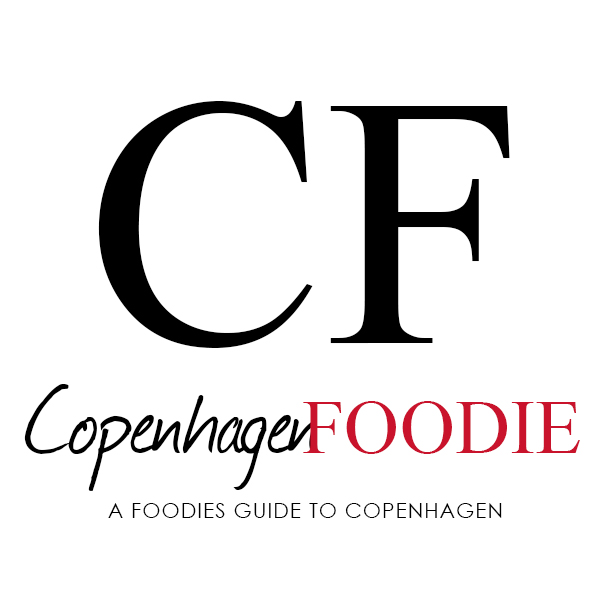
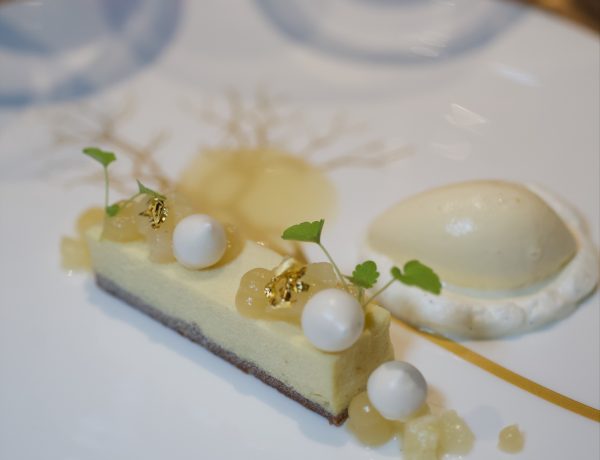
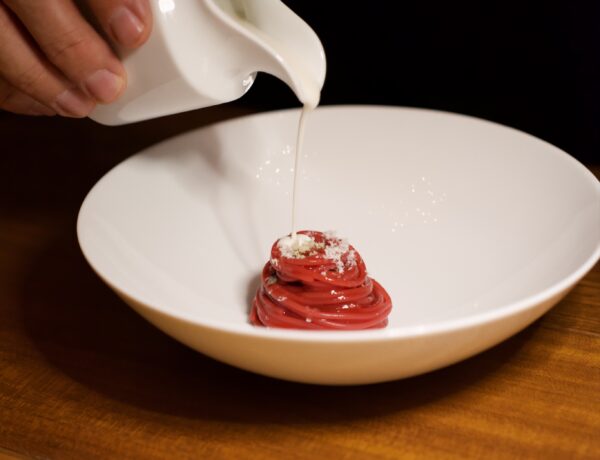
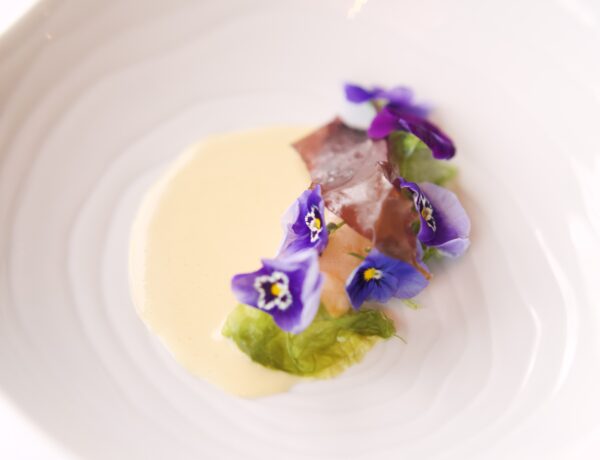
No Comments